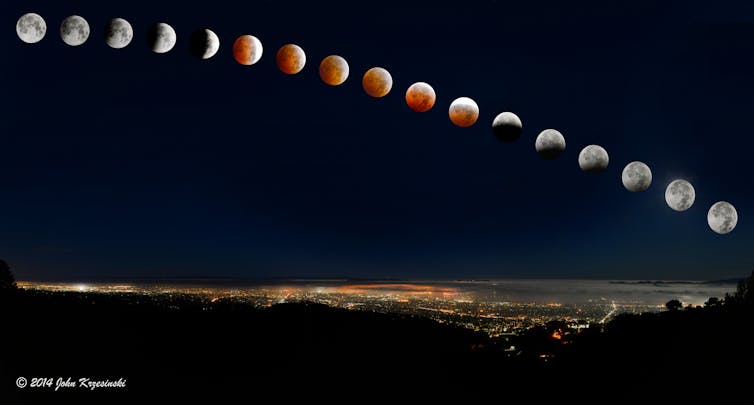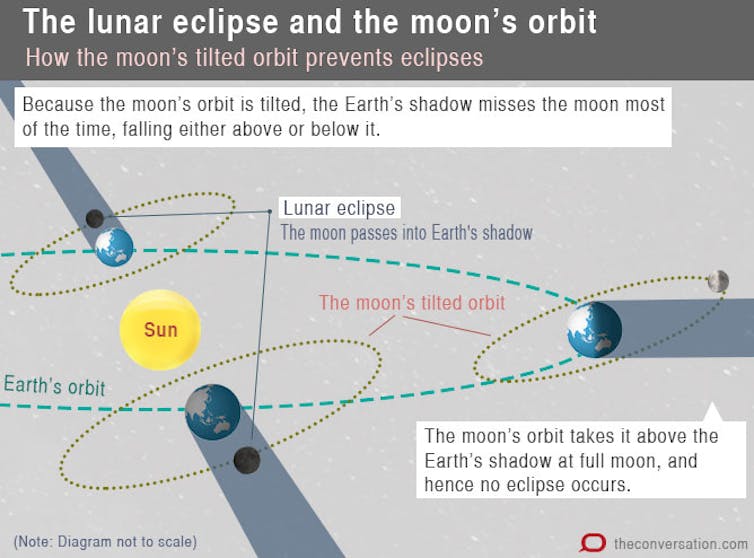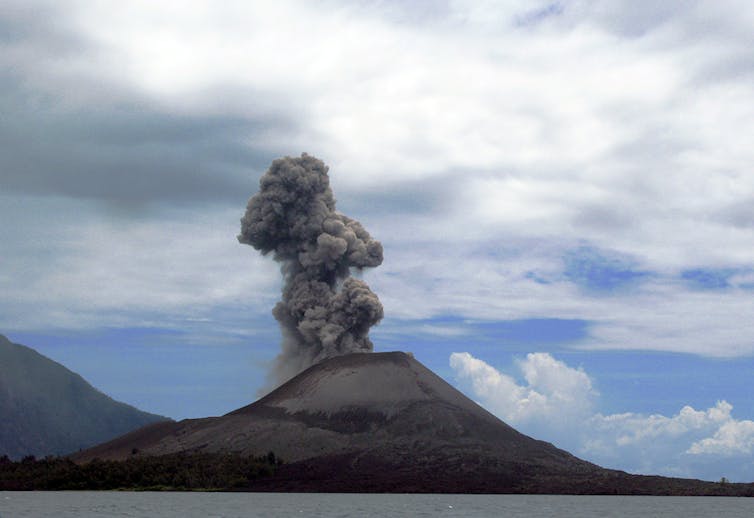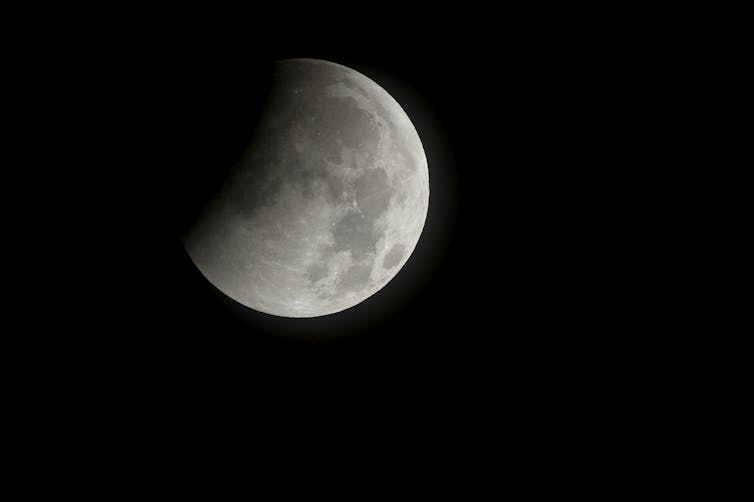A total lunar eclipse will occur on Wednesday, January 31, and Australia is in the perfect position to see it. But it’s also being called many other lunar things, from a Blood Moon to a Blue Moon and a Super Moon.
So what is really going to happen on the night? We explain everything you need to know.
[referenced url=”https://www.lifehacker.com.au/2018/01/how-to-watch-the-total-lunar-eclipse-in-australia/” thumb=”https://www.lifehacker.com.au/wp-content/uploads/sites/4/2017/08/GettyImages-836360158-410×231.jpg” title=”Blue Moon Lunar Eclipse: How And When To Watch In Australia” excerpt=”Whether you call it a super moon, blood moon or Super Blood Blue Moon, Wednesday’s total lunar eclipse is going to be spectacular. Earthlings haven’t seen a celestial event like this in nearly 150 Years – and Australians have the one of the best seats in the world! Here’s what you need to know for an optimum viewing experience in each state and territory.”]
This is the first time in three years that we have the chance to see a total lunar eclipse from Australia, and the Moon will spend just over three hours passing through Earth’s shadow.
The great thing about lunar eclipses is that they are lovely to watch and no special equipment is needed to see the events unfold.
From light to dark
At first we’ll see the Full Moon begin to darken. For Wednesday’s lunar eclipse the shadow will approach from the bottom-right, leaving the top part of the Moon in sunlight.
It takes an hour before the Earth’s shadow crosses the Moon entirely and once the Moon is completely engulfed the period known as totality begins.

The steady progression of an eclipse as the Moon drifts into the Earth’s shadow, June 16, 2011.Phil Hart
Totality brings its own surprise. The Earth’s shadow is not completely black, but has a reddish hue. This has led many cultures, including some Indigenous Australian communities, to describe a lunar eclipse as a Blood Moon.
Sunlight still manages to reach the Moon but it must first pass through Earth’s atmosphere. This both reddens the light (by scattering away the shorter wavelengths or blue light) and also bends the path of the light, directing it into the shadow.
This week’s lunar eclipse is a fairly deep one and totality will last just over an hour. Thereafter, the Moon will begin to emerge from the shadows, and it will be another hour before we see the brilliance of the Full Moon once more.
How I can see it?
The eclipse can be seen by the entire night side of the globe and everyone will experience the event at precisely the same moment. What affects the eclipse timings are local time zones.

For Western Australia, the eclipse occurs in the early evening, within an hour after sunset. The Moon will be low to the eastern horizon at the start of the eclipse but will move higher in the sky and towards the northeast as the eclipse progresses.
For the rest of Australia, the eclipse occurs two to three hours after sunset. The eclipse will begin with the Moon in the northeast and climbing towards the north.
Check in with your local planetarium or amateur astronomy group, as many organisations are hosting eclipse events so that you can share the occasion with others.
But if the weather doesn’t cooperate in your local area, you can also follow the eclipse via live streaming by Slooh, the Virtual Telescope, or timeanddate.com.

A lunar eclipse over San Francisco Bay in 2014 (note the moons have been enlarged slightly for clarity).John ‘K’/flickr, CC BY-NC-ND
Super Blood Blue Moon
It seems these days that it’s not enough to be treated to a beautiful natural phenomenon like a total lunar eclipse. Instead, I’ve been hearing a lot of hype surrounding this eclipse and the numerous names applied.
It’s true that lunar eclipses can only occur around the time of Full Moon. That’s when the Sun is on one side of the Earth, while the Moon is located on Earth’s opposite side.
Most of the time the Full Moon sits above or below Earth’s shadow and the Moon remains flooded with sunlight. But twice a year, the three bodies fall into line so that Earth casts its shadow on the Moon.

As well as being a Full Moon, eclipses can also be described as a Blood Moon because of the Moon’s reddish appearance, as mentioned previously.
But the descriptions of Super Moon and Blue Moon may not be quite what they seem.
Look to the sky … it’s a Super Moon!
I’ve written before about the Super Moon sensation and it’s a term that has only taken off in the past seven years.
Back in March 2011, NASA published an article describing a “super full moon”. The precise time of Full Moon that month occurred 59 minutes before perigee, that is, the Moon’s closest approach to Earth as it travels along its elliptical orbit.
As quoted in the article:
The full Moon of March 19th [2011] occurs less than one hour from perigee – a near-perfect coincidence that happens only every 18 years or so.
It must have seemed a worthwhile curiosity to report on at the time.
Seven years later and the Super Moon craze is now a bit out of hand, with some claiming three Super Moons a year depending on the chosen definition.
As a Super Moon this lunar eclipse is definitely on the outer limits, with the Full Moon occurring 27 hours after perigee and at a distance of more than 360,000km (calculated in the usual way from the centre of Earth to the centre of the Moon).
Considering that it’s also quite difficult to tell the difference in both size and brightness between a regular Full Moon and a Super Moon, this one is really pushing the limits of credibility.
Once in a Blue Moon
According to Philip Hiscock, a folklorist at the Memorial University, USA (now retired), the classic saying “once in a blue moon” is more than 400 years old. It originated as something so absurd it could never actually happen, similar to saying “when pigs fly”.
But it is possible on rare occasions for the Moon to turn blue.
Intense volcanic activity or smoky forest fires can fill Earth’s atmosphere with dust particles that are slightly larger than usual. As a result, red light is scattered away, giving everything a blue tinge, including the Moon (normally the atmosphere scatters blue light, hence why the sky is blue).

When Krakatoa erupted in 1883 the Moon turned blue for a couple of years [Image: flydime/Wikipedia]
But when it comes to this lunar eclipse, it’s not the colour of the Moon but a quirk of our timekeeping that is in play.
What a difference a day makes
A Full Moon occurs every 29.5 days, but our months are longer (excluding February). This mismatch of timing means that every couple of years there comes a month with two Full Moons.
In recent times, a Blue Moon has referred to the second full moon of a calendar month. For most of the world, this lunar eclipse is occurring during a Blue Moon, except for Australia’s eastern states of New South Wales, Victoria, Tasmania and the Australian Capital Territory.
Those states follow daylight saving, which pushes the Full Moon into the following day and out of the month of January (the actual time of Full Moon is 12:26am AEDT, February 1). This leaves January with only one Full Moon for those states and territory.

A lunar eclipse begins in Virginia, USA, December 21, 2010. [Image: Flickr/NASA/Bill Ingalls]
But there’s more. This modern definition of Blue Moon arose only 30 years ago.
The original definition is as follows: if four Full Moons occur between an equinox and a solstice (for example, in the three months between a spring equinox and a summer solstice) then the third Full Moon should be called a Blue Moon.
This ensured that the proper names of the Full Moons (common in North America, such as the Harvest Moon) were correct relative to the equinoxes and solstices.
 But regardless of the exact flavour of this lunar eclipse, what’s certainly true is that we are part of a grand universe, and Wednesday night is the perfect reminder of that.
But regardless of the exact flavour of this lunar eclipse, what’s certainly true is that we are part of a grand universe, and Wednesday night is the perfect reminder of that.
Tanya Hill, Honorary Fellow of the University of Melbourne and Senior Curator (Astronomy), Museums Victoria
This article was originally published on The Conversation.
Comments